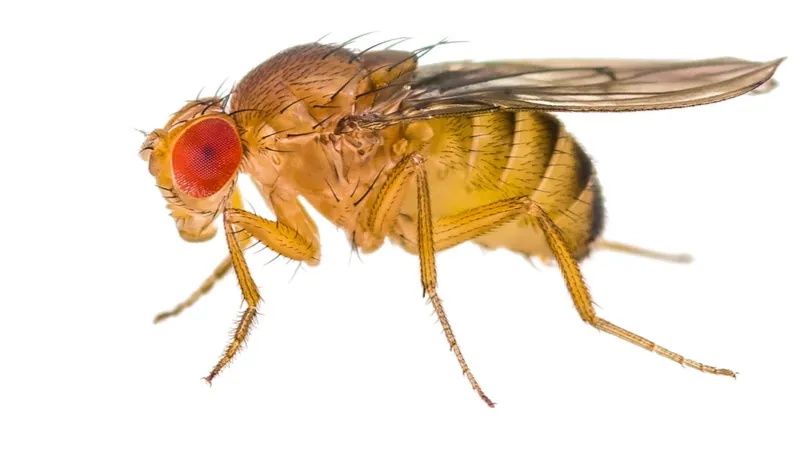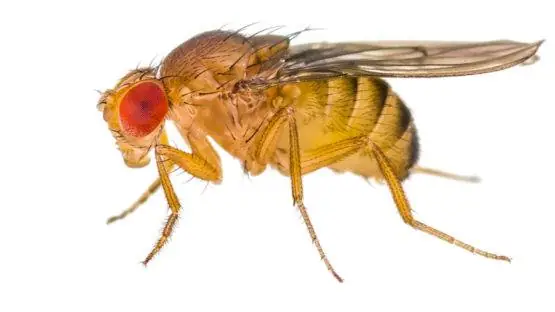Scientists have successfully reversed the decline in cellular stress response in drosophila flies [1].
Our cells rely on epigenetic regulation to do their various jobs: while a muscle cell has the same genome as a liver cell, the difference in gene expression is what sets them apart. With age, these complex epigenetic patterns can go awry, causing trouble, which is why epigenetic alterations are among the nine hallmarks of aging. Some scientists, including David Sinclair, propose the “information theory of aging”, which postulates that aging is a result of the gradual loss of genetic and epigenetic information [2].

Read More
Epigenetic mechanisms also orchestrate the cell’s responses to various threats, such as pathogens and oxidative stress, and aging hampers these defense mechanisms. The authors of this new paper are focusing on CncC, the drosophila homolog of Nrf2, one of the transcription factors that facilitate cellular stress response. Although flies resemble humans even less than mice do, drosophila are a popular research platform that keeps yielding important insights.
A caveat of reversing stress
Confirming previous research [3], the authors report that the ability of CncC to stimulate the transcription of antioxidant and detoxification genes in flies gradually declines with age.
To facilitate genetic response to stress, CncC requires the help of a small protein called Maf-S. The scientists showed that overexpression of Maf-S in old drosophila flies restores the robustness of their reaction to acute oxidative stress almost to the levels observed in young flies. Maf-S overexpression also increases flies’ fitness.
However, these results come with a caveat. In some of the flies, Maf-S overexpression was only induced during the last week of their approximately 5-week-long lives, while in others, it lasted their whole lives. Although the final levels of Maf-S were similar in both groups, the beneficial effect of Maf-S overexpression was only observed in the second group.
These strange results have an explanation. While CncC resides outside the nucleus and enters it when a response to stress is needed, Maf-S is constantly bound to CncC-regulated genes, and its role is to keep these parts of the chromatin ready for transcription – after all, we want our cells’ reactions to stress to be quick. Experiments showed that chromatin accessibility in these stress-related regions declines with age unless Maf-S is overexpressed over the whole lifespan. Confirming the role of Maf-S, genetically modified flies with the Maf-S gene knocked out begin to show signs of chromatin inaccessibility in these regions early in life.
The pharmaceutical approach
Although Maf-S overexpression seems to be well-tolerated, to trigger it, one needs genetically modified flies. As of now, this therapeutic approach is not applicable to humans. This led the researchers to target CncC itself with Oltipraz, an Nrf2-activating drug (remember, CncC and Nrf2 are homologous). The researchers suspected that if Nrf2-activated genes become less accessible with age, a higher concentration of Nrf-2 could do the trick. Oltipraz did work, but, just as with Maf-S overexpression, it only worked when administered throughout the fly’s life. This led to the hypothesis that in order to stay accessible, Nrf2-activated genes must be exercised – i.e., transcribed more often. Interestingly, physical exercise, which our bodies perceive as stress, elevates Nrf2 levels in humans, and physically active people show more robust Nrf2 activation than age‐matched sedentary controls [4]. The “exercise hypothesis” is supported by the fact that both Maf-S overactivation and Oltipraz worked better when administered intermittently: for 3 or 4 days during every week of a fly’s life, rather than daily. Apparently, this is what keeps stress-related genes on their toes.
Memory mechanisms … maintain genes at low activity, but in a poised state ready for up‐regulation in response to appropriate signals. Our data suggest that such a poised state can be lost with age and that a resulting loss of transcriptional competence might contribute to age‐associated frailty. Our findings suggest, however, that the probability of such functional decline can be decreased by frequent gene activation. Several observations suggest that such a “use it or lose it” model might also operate in humans. In other words, periodic stimulation of the Nrf2 pathway might preserve its function in aging people and contribute to a longer health span.
Oltipraz treatment made the flies more fit and prolonged their lifespan by 14.3% for males and about 6% for females. We should not be overly excited about this, though, as any lifespan increase resulting from an intervention tends to be negatively correlated with the complexity of the model organism.
Conclusion
This research touches on one of the most important aspects of aging: the loss of epigenetic homeostasis. It shows that, in principle, it is possible to keep our cellular stress responses sharp by regularly exercising them. It also seems to reaffirm the idea that some aspects of aging begin early in life, and at least some efforts to offset them may have to start early as well.
Literature
[1] Cheng, Y., Pitoniak, A., Wang, J., & Bohmann, D. (2021). Preserving transcriptional stress responses as an anti‐aging strategy. Aging Cell, e13297.
[2] Karnaukhov, A. V., Karnaukhova, E. V., Sergievich, L. A., Karnaukhova, N. A., Bogdanenko, E. V., Manokhina, I. A., & Karnaukhov, V. N. (2017). The information theory of aging: The major factors that determine lifespan. Biophysics, 62(5), 829-835.
[3] Rahman, M. M., Sykiotis, G. P., Nishimura, M., Bodmer, R., & Bohmann, D. (2013). Declining signal dependence of Nrf2‐MafS‐regulated gene expression correlates with aging phenotypes. Aging cell, 12(4), 554-562.
[4] Safdar, A., deBeer, J., & Tarnopolsky, M. A. (2010). Dysfunctional Nrf2–Keap1 redox signaling in skeletal muscle of the sedentary old. Free Radical Biology and Medicine, 49(10), 1487-1493.



